I remember saying to an English teacher once, “Could you just show me a term paper that was written the way you want to look and sound and I promise I can do that”.
Sometimes you just want someone to say “This is how I do things”.
As far as the songwriting process, you don't have to do it the way I do it.
Here is a way to do what you're trying to do. That's what this post is about. I'm going to try to explain the choices I made in creating a song I wrote called “The Kid”.
I know it resembles more of a “chapter” rather than a post – but writing a song is multi-step process involving lots of options and decisions.
The Song
Sometimes you just want someone to say “This is how I do things”.
As far as the songwriting process, you don't have to do it the way I do it.
Here is a way to do what you're trying to do. That's what this post is about. I'm going to try to explain the choices I made in creating a song I wrote called “The Kid”.
I know it resembles more of a “chapter” rather than a post – but writing a song is multi-step process involving lots of options and decisions.
The Song
Background
I needed a song for a holiday program for an elementary school holiday program. It would be the closer. It wasn't going to be upbeat. I wanted it to be more slow and sincere, as if the children were actually stating the message of the song directly to their parents.
As you can see, I had a lot of variables in place that my writing had to conform to. The song had to be on the slower side of things and feature lots of vowels. The lyric had to be had to be direct, like an open letter.
The Title
I wanted a title with an “everyman” quality about it. I thought of Charlie Chaplin’s “The Kid”, an iconic movie from the silent era. It’s one of my favorites. The pathos created between Chaplin and young Jackie Coogan created mass hysteria when it was released. By the way, titles can not be copyrighted.
Form and Chorus Melody
When I first started writing this, I had an eight-bar melody and chords to the chorus. I came up with them while washing the dishes in my kitchen, simply scatting a melody on the syllable “doo” and hearing in my head the chord progression that would ungird it. It took less than a minute to do.
I decided that I would use a simple ABABBC form with A being the verse, B being the chorus, and C being the coda.
What I now needed was a melody for the verse – I already had a chorus.
Lyrics
As I dried the dishes, I started kicking around ideas for the lyric content in the verse. I decided to do a list song.
“I'm the kid who . . . . .” would be the sentence starter for my list.
I also wanted the first few lines to state the obvious and then go toward a little bit of pathos so I started with “I'm the kid who's on the stage, can you see me over here?”.
Of course, every parent has their eyes glued on their kid so it seems like a silly line but it was embellished with some hand motions by all the kids.
In rehearsal I told them that when they sang “Can you see me over here?”, they should all all to wave at their parents, to which they all quickly responded, “But you told us to never wave to anyone in the audience when we are on stage”.
My answer was simple but profoundly basic in the world of music.
“Yes, I've told you never to wave from the stage, but there's a right time in the right place to break the rules and this is one of them. Wave.”
That opening line is followed up with the line “I'm standing by another kid whose fighting back his fears”. Alliteration works here.
That's where the pathos comes in because many kids do get frightened when they have to stand on stage.
The next part was simple autobiographical writing.
“I'm not the kid who was the star, I might have missed a line, I'm not the kid who's always doing fine.”
That's rounds up my elementary school experience, constantly in trouble, at war with my teachers.
Love
The payoff to the list is in the chorus and I knew that it wanted to end with some version of love.
The word “love” can be problematic with kids. They are often squeamish about singing the word “love” and it always tends to be more hassle than it's worth in a lyric with little kids.
So I had that to work around.
I decided that I'd get the word “love’ out of the way early in the chorus, not make it a long sound, and have the following lyrics exemplify and expand on the concept of love.
Point of View
I started the chorus with “I'm just the kid who loves you so much”.
“Just” is one of those words many songwriters stay away from. It’s seen as sound filler and not worthy of lyric content. But I used it any way.
I'm playing one point of view off of another with the self-effacing kid saying “I'm just the kid who loves you so much” in an almost self-deprecating way, as if their love is all they have to offer. The word “just” sets up that emotion.
I know the line will have emotional content from the point of view of the parents because that's all parents want to hear from their kid is that they're loved and it's no small issue to them.
The part about “waiting by the door, looking for your face”, is also an autobiographical bit.
I'm told that when I was three or four, I would sit in a chair looking out my grandmother's front window at about five in the afternoon, waiting for my father to walk down North Broom Street on his way home from work.
We couldn’t afford a car; my father took the bus to and from work.
I knew most other fathers drove to work. When the weather was bad, I would sit in that chair, get very sad, and say to no one in particular “Poor my dad” because he had to walk in the rain.
The second verse continues with a list that's more like quick-cut scenes in a movie.
Parents always remember the day they brought their child home from the hospital. I took that pivotal moment and juxtaposed it with a family holiday diner scene when the child spills the gravy at a dinner on the table cloth. (image association: gravy goes with turkey, turkey goes with holiday, holiday goes with large family gathering, and spilling the gravy on a special holiday table cloth is a serious offense.)
Spilling the gravy was something a parent would quickly forget but guilt a child could carry for a while.
The part about the card with a misspelled name it's something I once observed a kid do with school.
A child made a card and I believe they wrote “Mommmy”. I remember fighting the urge to make them correct it because I knew the fact that they attempted to write the word on their own would mean much more to their Mom than having the word spelled correctly and would make the card special in years to come.
Verse Melody
I decided to start the verse with a dominant seven chord, something I had never done in a song before. I started vamping a I-IV-V7 thing in the key of C major to get in the mood.
I said the first few lines over the V7, moved the harmony to a IV, and did a plagal cadence to the I, with a Floyd Crammer piano embellishment of the second sliding up to the third in the right hand. It immediately had a country feel to it and I improvised a melody starting on D ( a chord tone in the V7 chord) and put a little bit of a Garth Brooks twang to it, including a lower neighbor note sliding up to the word “here” (m. 4). As I vocally tried each line during the writing process, I kept the twang and tried to envision a Garth or a Toby Keith singing it.
The chord over the “fear” (m.8) was originally a vi (A minor). I wanted to add some mystery and unresolved tension so I changed it to a V/vi (G/A is a G major chord over an A bass).
Each of the four phrases in the verse have the same starting pattern: V-IV progression so that became my respective glue.
The chorus contains a melodic descending sequence that dictated the harmony that rests for a moment on a secondary dominant. The high note in the song rises to the tonic note on the word “proud” with a dramatic octave leap down.
Keys
I started writing this in C but moved to D to make that high D stand out. The kids had some special understanding of high Eb, though. Anytime they hit that note in other songs, it seemed to ring like a bell, unlike a D or an E.
I decided to build drama - I would do the song in D and repeat the chorus at the end in Eb.
The coda contains a pretty simple, commonplace harmonic turnaround (iii7-vi7-ii7-V7- V/IV).
I had the kids put out their hands palms up on the word “proud”.
Each time they sang the word “proud” (m. 58, 63, and 66) they were to gesture a little bit more forcefully with their arms, palms up.
When they sang the word “I'm” (m. 68, beats 1 and 2) they pointed to themselves. when they sang “your” (measure 68 beats 3 and 4), they pointed to their parents. and when they sang “kid” (m. 69), did their arms out/palms up movement.
Conclusion
The song was successful. Parents and kids still tell me about remembering it.
Note how many of the words are single-syllable words.
This lead sheet was created with Avid Sibelius. Back when I composed it, the first versions were in pencil or osmiroid pen.
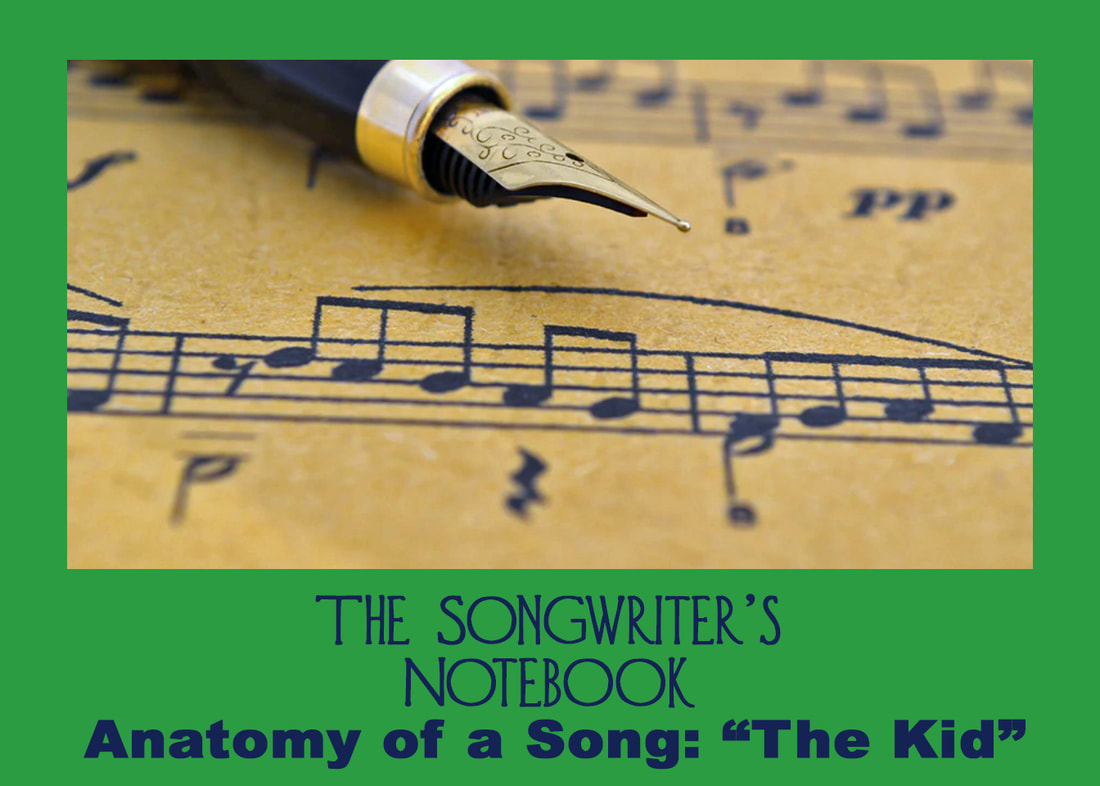
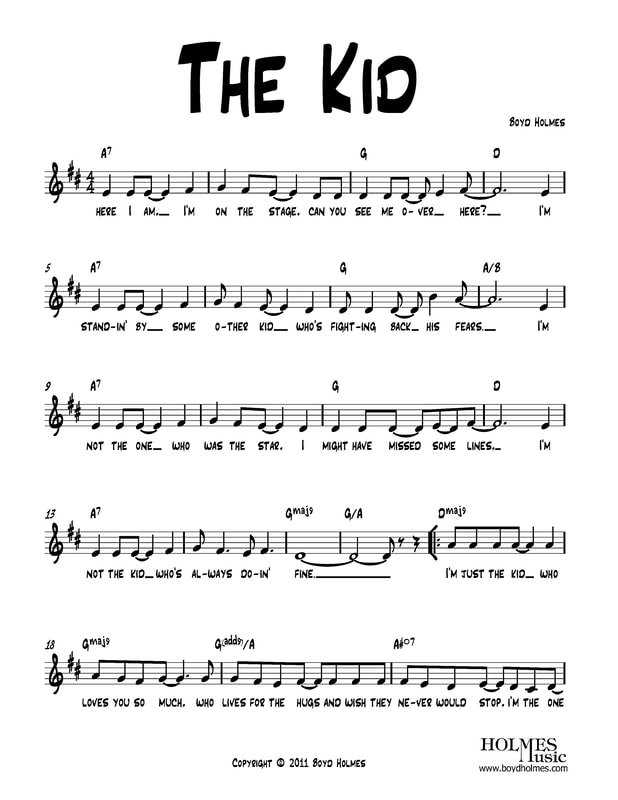
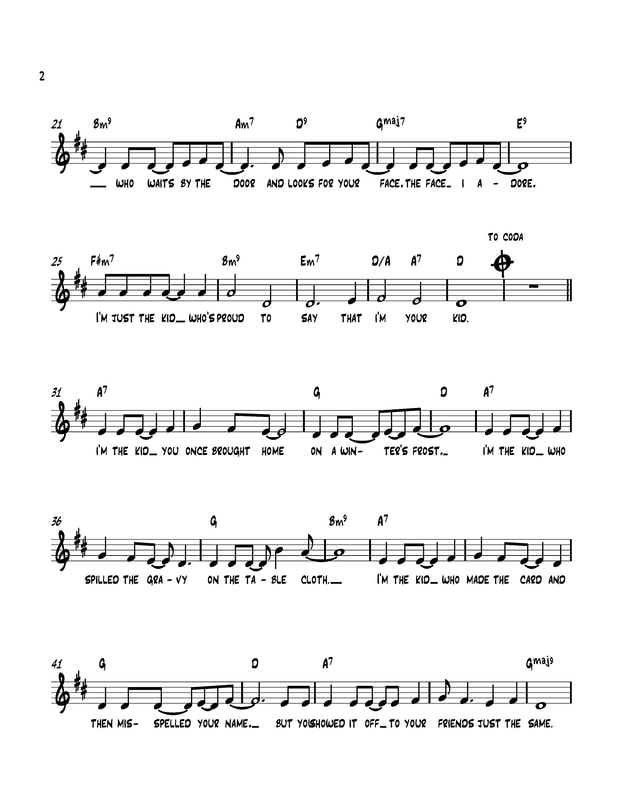
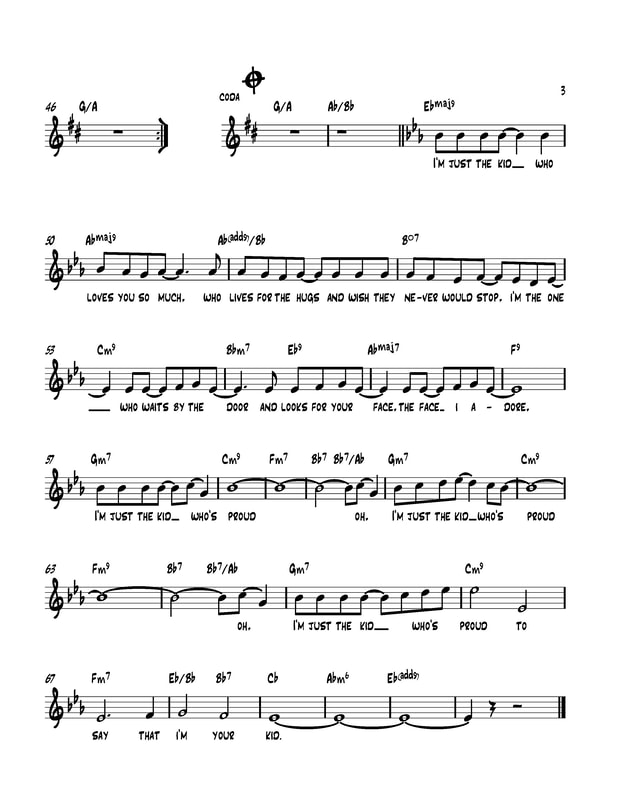
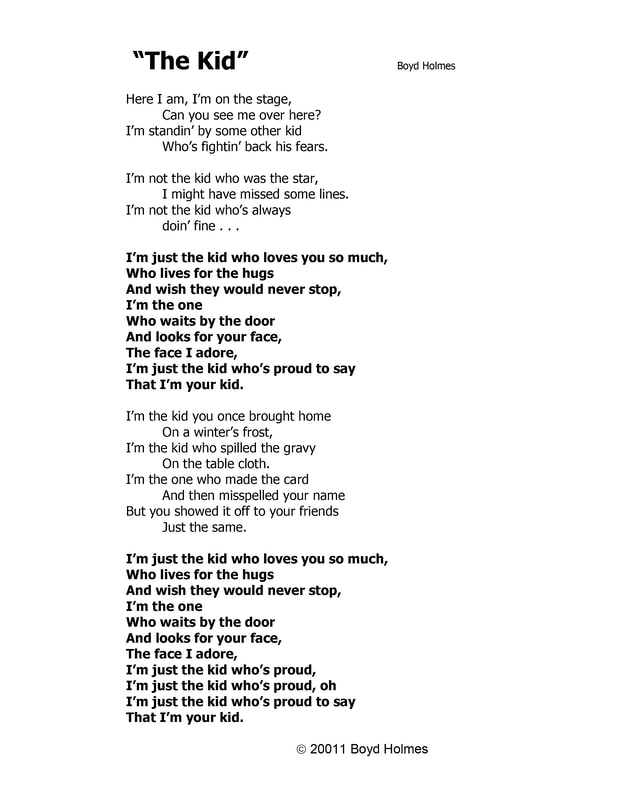
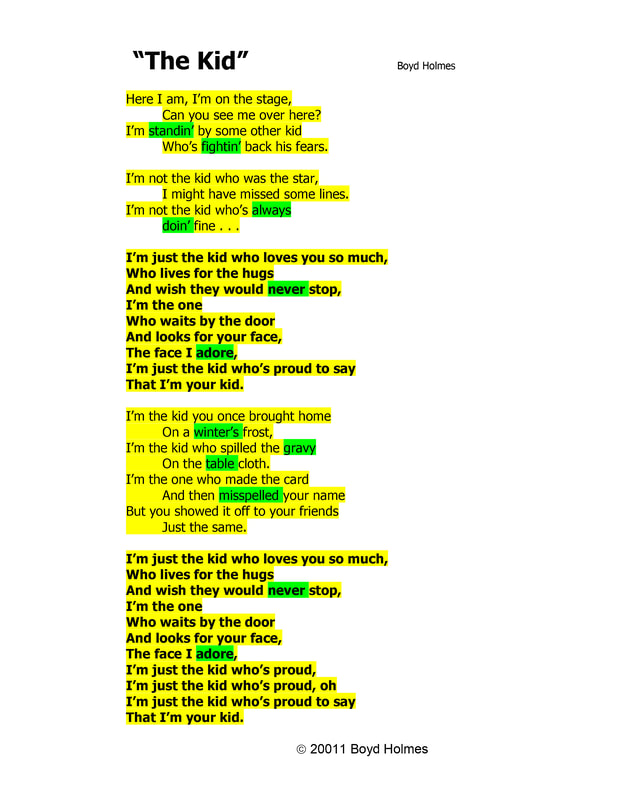
 RSS Feed
RSS Feed